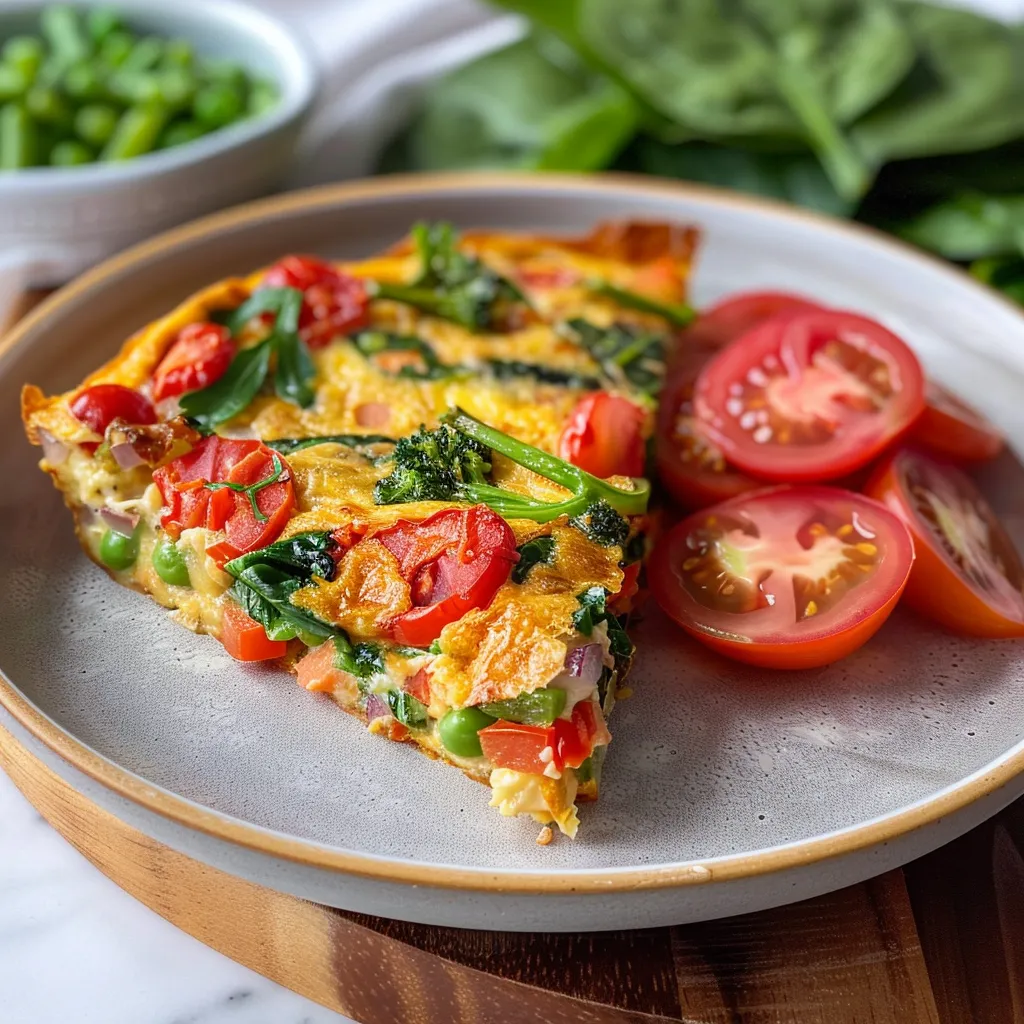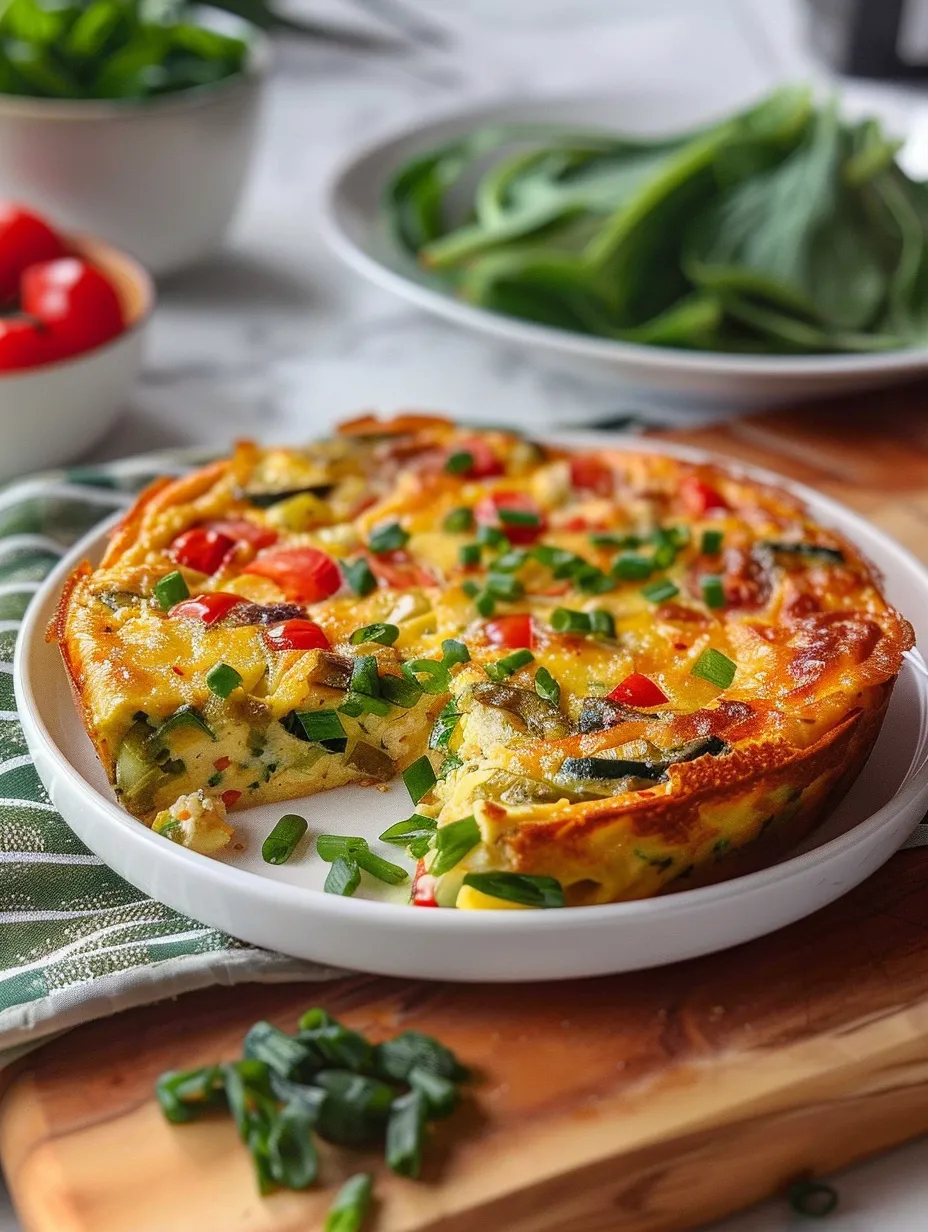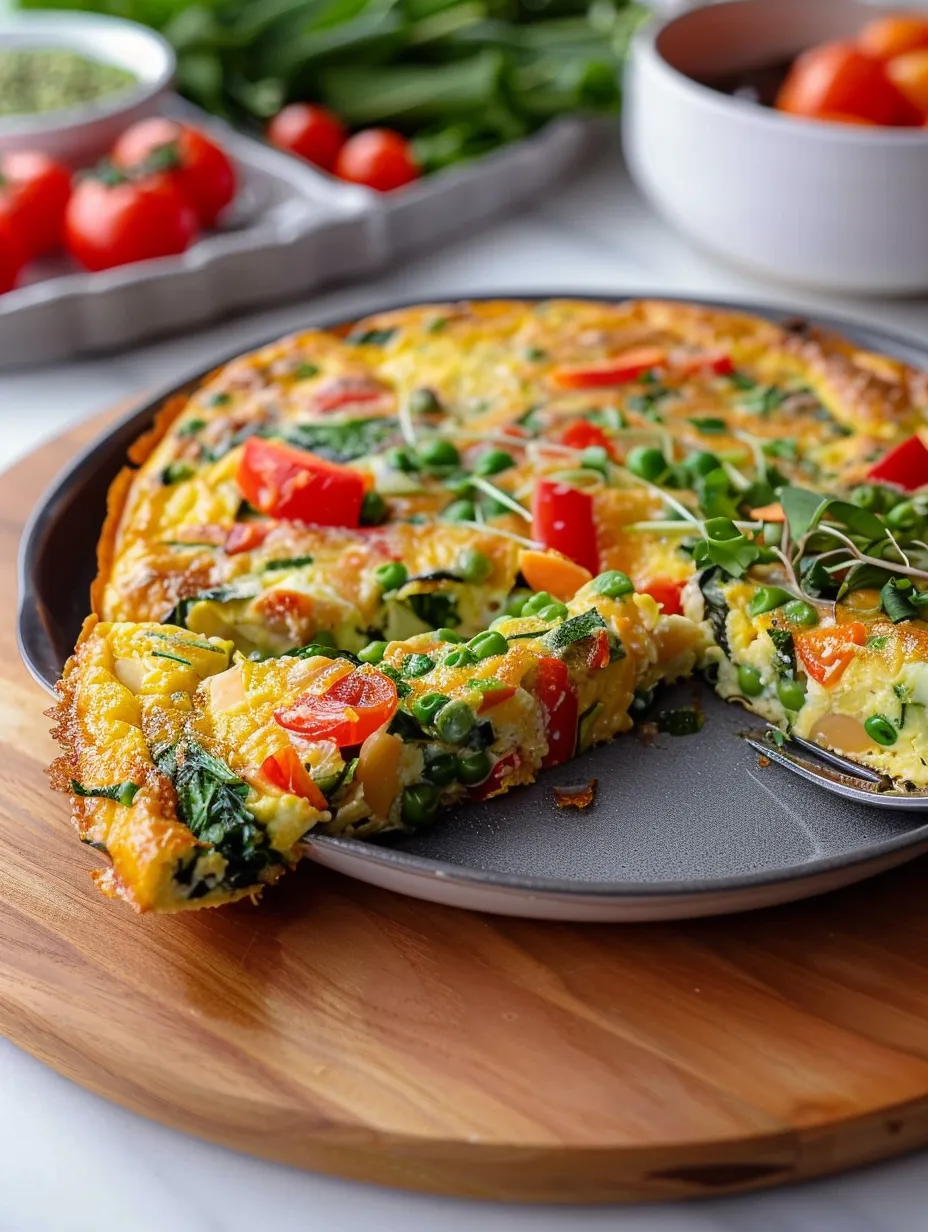 Pin it
Pin it
The Art of the Vegetable Frittata is a culinary masterpiece that balances simplicity and sophistication in perfect harmony. This comprehensive guide reveals how a humble egg dish transforms into an extraordinary meal through thoughtful preparation and ingredient selection.
After exploring countless egg preparations, I've discovered that the frittata reigns supreme for its remarkable balance of flavor, nutrition, and convenience. The moment that perfectly set egg mixture with its mosaic of colorful vegetables emerges from the oven, you'll understand why this dish deserves a place in your regular rotation.
Essential Components
Egg Quality: Fresh, high-quality eggs create the foundation for exceptional texture. Dairy Balance: The proper ratio of eggs to milk determines the final consistency. Vegetable Preparation: Proper pre-cooking ensures vegetables achieve ideal doneness. Cheese Selection: Different cheese varieties provide distinctive flavor profiles. Cooking Technique: Even heat distribution ensures consistent results.
 Pin it
Pin it
Creating Your Masterpiece
- Perfect The Base:
- Whisk eggs thoroughly with dairy until completely homogenous for a smooth, creamy custard.
- Master The Vegetables:
- Prepare each vegetable appropriately - sautéing aromatics, pre-cooking denser vegetables, and incorporating tender greens.
- Build The Flavors:
- Layer ingredients thoughtfully, considering both visual appeal and flavor distribution.
- Create The Texture:
- Monitor cooking carefully, performing the "jiggle test" to achieve the perfect balance of set and moist.
- Complete With Finesse:
- Finish with fresh herbs, a drizzle of olive oil, or additional cheese for maximum impact.
This versatile dish has transformed my approach to meal planning, providing endless variations for breakfast, lunch, or dinner. The ability to showcase seasonal produce while creating a nutritious, protein-rich meal makes the frittata truly extraordinary.
Perfect Pairings
Enhance your frittata experience with thoughtful accompaniments. Serve with a simple green salad dressed with lemon vinaigrette for brightness. Add crusty artisan bread for satisfying substance. For brunch presentations, include fresh fruit or roasted potatoes. During cooler months, pair with a light soup for a complete meal.
Creative Variations
Adapt this foundational recipe to create endless possibilities. Try a Mediterranean version with olives, feta, and sun-dried tomatoes. Create a fall harvest frittata with roasted sweet potatoes and sage. Make a spring celebration with asparagus, peas, and fresh herbs. For hearty appetites, incorporate pre-cooked sausage, bacon, or ham.
 Pin it
Pin it
Troubleshooting Success
Address common challenges with proper technique. Prevent wateriness by thoroughly cooking vegetables to release moisture. Avoid dryness by carefully monitoring cooking time and removing when still slightly jiggly in center. Ensure even cooking by rotating the pan halfway through baking. Prevent sticking with proper pan preparation.
Through countless frittata preparations, I've found that attention to detail in egg preparation and vegetable cooking creates the most successful results. This guide proves that with proper technique and quality ingredients, a simple egg dish can be elevated to an extraordinary culinary experience suitable for any occasion.
Frequently Asked Questions
- → What vegetables work best in a frittata?
- Almost any vegetable works well in frittatas! Some excellent options include bell peppers, zucchini, mushrooms, asparagus, broccoli, cherry tomatoes, spinach, kale, and onions. Vegetables with high water content (like zucchini or tomatoes) should be cooked first to remove excess moisture. Root vegetables like potatoes or sweet potatoes should be pre-cooked until tender before adding to the frittata.
- → Can I make this frittata ahead of time?
- Yes, frittatas are perfect for make-ahead meals! You can prepare it up to 3 days in advance and store it covered in the refrigerator. Serve cold, at room temperature, or gently reheat individual slices in the microwave for 30-45 seconds. You can also freeze slices for up to 3 months - wrap individually in plastic wrap and thaw overnight in the refrigerator before reheating.
- → What's the difference between a frittata and a quiche?
- The main difference is that a quiche has a pastry crust and typically contains cream or milk, while a frittata is crustless and contains little to no dairy. Quiches are always baked in the oven, while frittatas traditionally start on the stovetop and may finish in the oven. Frittatas are generally easier and quicker to prepare since there's no crust to make.
- → How can I tell when my frittata is done baking?
- A properly cooked frittata should be set around the edges and most of the way through, but still have a slight jiggle in the center when you gently shake the pan. The top should be lightly golden but not browned. If you insert a knife in the center, it should come out mostly clean with perhaps a few moist crumbs. Avoid overbaking, as this can make the frittata dry and rubbery.
- → Can I make this dairy-free or lower in cholesterol?
- Yes! To make it dairy-free, substitute the milk with unsweetened plant milk (almond, soy, or oat work well), use olive oil instead of butter, and either omit the cheese or use a dairy-free cheese alternative. To reduce cholesterol, you can use a combination of whole eggs and egg whites (substitute 2-3 whole eggs with 4-6 egg whites). The texture will be slightly different but still delicious.
